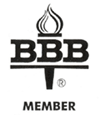  |
 |
  |
![]()
Northeast Water Systems FAQ
What is water
conditioning?
A: Water conditioning is that branch of engineering that determines the
chemical characteristics of a water supply, as it enters your home and
treats these characteristics to provide water more suitable and economical
for household use.
Why is it
essential to improve water quality?
A. Beyond being an absolute necessity of life, water is an outstanding
cleaning agent. The trouble is that nature and/or your municipal water
company does a lot of things with water before you have a chance to use
it in your laundry or at your kitchen sink. You get it second hand. Therefore
improving your water quality by water conditioning is just as essential
as any other home appliance.
Does the
conditioned water have a "different" taste?
A. Taste is difficult to define as no two people have the same sense of
taste. A water conditioner will remove certain minerals from the water,
giving you cleaner, better tasting water.
Will conditioned
water give a cleaner, brighter wash?
A. Yes. For best results, you should use the proper amount of laundering
agent. Keep in mind a 70% - 80% soap saving can be achieved with conditioned
water. Learn to use less laundering agent because none of the cleansing
compound will be wasted as in hard water cleaning. The amount of laundering
agent you use depends on its effectiveness, the volume and temperature
of water, the size of the wash load and the type and amount of dirt and
grime.
What effect
will conditioned water have on plumbing?
A. Before the water was conditioned the hard water caused a scale buildup
in the hot water pipes and water heater. Scale acts as an insulating material.
In the water heater, scale reduces heat transmission, wastes fuel, and
often causes heating coil and tube failure. The installation of a water
conditioner not only prevents further scale formation but will gradually
remove previously formed scale deposits. A recent study indicates that
softened water offers a saving of 23% in energy cost in the operation
of a hot water heater.
Are the minerals
which a conditioner removes from hard water essential to
health?
A. No. The quantity of minerals found in hard water is not essential to
good health.
Is the sodium
in softened water harmful to people on restrictive diets?
A. Much depends on the strictness of the diet itself. When the patient
is on an extremely restrictive diet, he should drink neither hard nor
softened water. Under these conditions he should have de-mineralized water,
distilled water, or water known to be free of sodium for drinking and
for the cooking of foods. Such patients are commonly hospitalized. In
establishing a salt free diet for patients, physicians should not overlook
the fact that even hard water may contain appreciable amounts of sodium.
To determine the amount a complete analysis of the water is necessary.
How much
sodium is added to softened water?
A. Each grain per gallon (GPG) hardness removed adds 7.875 milligrams
mg of sodium to a liter of water, which is approximately one quart. The
average daily sodium intake of an adult individual is 3 000 to 4 000 milligrams
and the average fluid intake is 1.6 to 2.0 liters per day. A liter is
slightly more than four 8 ounce glasses of water. Two liters per day or
8.4 eight ounce glasses of water amounts to a total sodium intake from
a source of softened 8 GPG water of 125.16 milligrams. This is approximately
3% of the average daily sodium intake.
There is another way to answer this question, and that depends on the hardness of your raw water. The following table shows the additional amount of sodium consumed by drinking one quart of softened water.
| Initial Water Hardness | Sodium Added By Softening |
| 5 Grains/Gallon | 37.5 Milligrams/Quart |
| 10 Grains/Gallon | 75.0 Milligrams/Quart |
| 20 Grains/Gallon | 150.0 Milligrams/Quart |
| 40 Grains/Gallon | 300.0 Milligrams/Quart |
How does this sodium
content of conditioned water compare to
sodium found in common foods?
A. The data in the following table demonstrates the usual range of sodium
in
common foods.
| Food | Amount | Milligrams of Sodium |
| Milk | 2 Cups | 226 |
| Bread | 2 Slices | 322 |
| Corn Flakes | 1 Ounce | 260 |
| Frankfurter | 1 Medium | 610 |
| Hamburger | 1/4 Lb. | 1,510 |
| Catsup | 1 Tbsp. | 204 |
| Baked Beans | 3/4 Cup | 1,130 |
| Frozen Peas | 1/2 Cup | 295 |
| Cottage Cheese | 4 Ounces | 457 |
| Parmesan Cheese | 1 Ounce | 528 |
| Pretzels | 1/4 Lb. | 1,925 |
| Chili | 1 Cup | 1,194 |
| Tomato Soup | 1 Cup | 932 |
| Beef Broth | 1 Cup | 1,152 |
It is important to note that about 2/3 of the daily water intake of any individual is through food and only about 1/3 from water itself.
For individuals concerned with sodium intake we offer a Potassium substitute. This would be used instead of salt in the brine tank.
Potassium Substitute
How much
potassium will be added to my water?
A. Assuming you drink 2 quarts of water per day, you would add the following
amounts of potassium to your diet, depending on the initial hardness of
your water.
Initial
Water Hardness |
|
| Grains Per Gallon | Potassium (mg) |
| 5 |
133 |
| 10 | 266 |
| 15 | 400 |
| 20 | 533 |
The following amounts of potassium would be present in some common fruits and vegetables.
| Fruit or Vegetable | Potassium (mg) |
| Apple |
152 |
| Banana (1 medium) | 440 |
| Cantaloupe (1 /2 small) | 682 |
| Beans (1/2 cup) | 390 |
| Broccoli (1 cup) | 232 |
| Potato (1 medium) | 782 |
Contact us if you additional questions about the water that you consume.
See Water Symptoms for more specific information on water quality.
We are now able to drill wells
We have purchased a well drilling rig and capabilities include
drilling new wells, making wells deeper and replacing well pumps.
![]()
Home | About Us | Products | Water Information | The Chlorine Problem | Contact Us
Northeast Water Systems, LLC
Kendall, NY
(585) 943-9225
info@northeastwatersystems.com